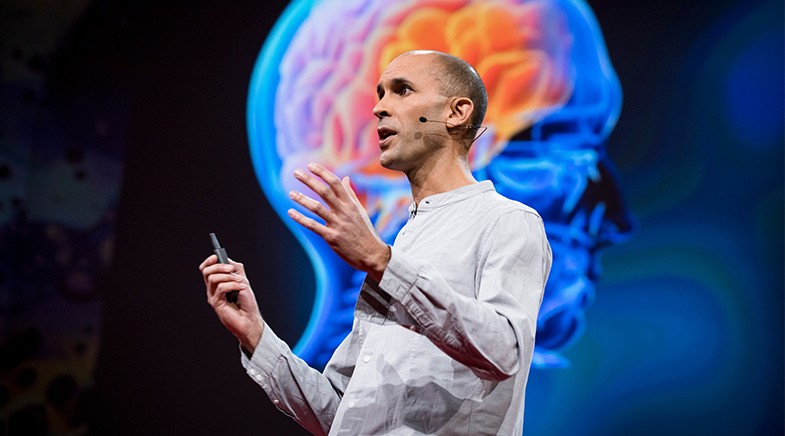Stroke of luck
-
- from Shaastra :: vol 03 issue 04 :: May 2024

A political scientist argues that more things are wrought by fluke than we realise.
On October 30, 1926, U.S. politician H.L. Stimson and his wife Mabel checked into the Miyako Hotel in Kyoto. For six days, they walked around the city, admiring its trees and blossoms and temples. According to the author of Fluke, it was the most consequential sightseeing trip in human history. Roughly 19 years later, as the U.S. Secretary of War, Stimson stopped a plan to drop the first atom bomb on Kyoto, then considered a nerve centre of the Japanese war machine. In his view, the city was too beautiful to be destroyed.
It wasn't an easy decision for America to make. Stimson could give no serious strategic reason to spare Kyoto, and sentimentality was not a motivation military commanders cared for. Stimson met President Harry Truman and convinced him to look at other bombing options, sparing 100,000 residents of Kyoto and dooming a similar number of people in Hiroshima. Meanwhile, the residents of the city of Kokura, too, were lucky. Unexpected cloud cover made it difficult for the pilot to approach Kokura, and clouds cleared at the last minute over Nagasaki. Even now, the Japanese refer to "Kokura's luck" to describe situations where someone escapes disaster through unexpected events.
Fluke plays a significant role in the life of everyone, and by extension in the life of the planet itself, the author says.
LIFE ISN'T A STORYBOOK
The fate of four cities was decided by chance events, two of them because of a vacation and the other two because of cloud cover. Author Brian Klaas, a political scientist at University College London, says that such influences are not rare. Fluke plays a significant role in the life of everyone, and by extension in the life of the planet itself. However, social scientists and lay people have a stripped-down version of reality, a linear world with precisely one cause and one effect. This storybook picture of the world is wrong, according to Klaas.
The rest of the book is a careful dismantling of the storybook idea of the world. As he breaks down one acknowledged myth after another – myths of a world where causes and effects are clearly defined – Klaas builds a more complex world where tiny events have unpredictable consequences, where everyone influences everyone else and no one is truly inconsequential. To illustrate his theory of flukes, Klaas also assembles an impressive showcase of examples.

Kyoto (pictured above) was initially a target for the U.S. atomic bomb in 1945, but it was spared because an influential American politician felt it was too beautiful to be destroyed.
One of them is from his own life. On June 15, 1905, Clara Jansen in Wisconsin killed all her children and took her own life. Her husband, Paul Klaas, was the great-grandfather of the author and had created a new family line when he got married again. In effect, Brain Klaas owes his very existence to a tragic fluke. Had Clara Jansen not killed herself and her family, the author would never have existed. Similarly, every living creature can trace back the reason for their existence to a series of flukes over hundreds of millions of years: flukes that scientists or lay people have no knowledge about. Despite this, academicians deal with cause and effect, and create pictures of reality with clear outlines and well-understood parts. These comforting lies must be replaced with accurate truth, says the author, echoing philosopher Hannah Arendt's postulates.
HISTORY-SHAPING PANTS
One of the author's early examples in the book is from his own field of political science. Several years ago, Klaas had travelled to Zambia to study why an attempted coup d'etat failed. By interviewing soldiers, he learnt of an unlikely factor. When coup plotters went to kidnap the Zambian army commander, he tried to escape by jumping over a wall. One of the plotters grabbed the commander's pant leg in order to pull him down, but he broke free because his trousers were slippery! It was a reason not found in history texts. If the commander had been wearing a different set of trousers, the rebel soldier may have caught him and pinned him down, and the coup may have succeeded.

We will never know the real reasons for the failed coup. Social science is a field where experiments cannot be replicated as in physics. However, the episode made it clear to the author that the storybook version of reality is false, and that we may need to accept the world as a series of flukes. One of the myths that Klaas tries to demolish is the idea, supposedly prevalent in the social sciences, that large effects are produced by equally large causes. In 1814, the French scientist Pierre-Simon Laplace hypothesised about a superhuman, called Laplace's demon, who could predict the future accurately if he knew the position and momentum of every particle in the universe. Such causal determinism went out of the physical sciences with the arrival of quantum mechanics, and also with the advent of chaos theory. Klaas mentions a well-known example from weather prediction, where small changes in conditions are known to amplify over a period into large weather systems.
Society behaves in the same way, according to Klaas, and small events can produce big effects. Specifically, flukes play an important role in human society. A political assassination was a key event leading to the First World War. A Tunisian street vendor triggered a series of revolutions in the Arab world by immolating himself. Further back in time, 1.45 billion years ago, multicellular organisms were created through the fluke of mitochondria integrating with another organism. The reason humans don't lay eggs is because a shrew-like creature was infected by a retrovirus, and this led to the development of the placenta roughly 150 million years ago. The rapid evolution of mammals is now attributed to a fluke event: the bombardment of an asteroid 65 million years ago. If it had hit the Earth a second later, the consequences to evolution would have been significantly different. Evolutionary biologist Mark Pagel has found that 78% of species were created by a single event.
A BIT (TOO) RICH!
Klaas splays the book with a large number of such examples, and busts several myths in the process. One is the myth of individualism. By extension, the myth of the super-rich getting their money through their individual brilliance. Human attributes like intelligence, skills, and hard work are normally distributed, creating a bell-like curve. Wealth, on the other hand, follows a power law or a Pareto Distribution, with a small number of people controlling a large amount of wealth. Physicists and economists have studied this and found that most billionaires lie at the middle level of talent, and luck is what pushes them to be outliers.
Human beings have the rare ability to spot complex patterns. On the other hand, modern humans also tend to come up with neat explanations for random events, a habit that Klaas calls the Cult of Because. We must know why, even if it is impossible. Market pundits often explain stochastic effects in market fluctuations due to unambiguous cause and effect. Such punditry is bad social science. It has a technical name as well: apophenia, or the tendency to see meaningful patterns among unrelated events. The financial world is especially replete with such punditry.
Because of its concrete examples and skillful narrative, the book is a fascinating read. We learn as much about the chance events of evolution as about quirky but ultimately significant events in modern society, why beliefs are so powerful, and why our minds tend to create stories even out of the thinnest of clues. In what is probably an apocryphal story, writer Ernest Hemingway was said to have bet that he could cram a tale worthy of a novel into six words. The onlookers took the bet and paid up. What Hemingway evidently wrote was: For sale: baby shoes, never worn.
However, despite the promise of early chapters, the book closes with a whimper, with a long rumination on what is significant in human life. Since certainty does not exist in the world, human beings should use the power of randomness to explore the unknowns. In other words, if flukes matter, human beings should be "creating" more flukes. The message of the book is that the best flukes come not from precise analytics of a seemingly stable past but from exploring the world aimlessly. This is hard in a world obsessed with productivity, but human beings ignore aimless exploration at their own peril.
Have a
story idea?
Tell us.
Do you have a recent research paper or an idea for a science/technology-themed article that you'd like to tell us about?
GET IN TOUCH














